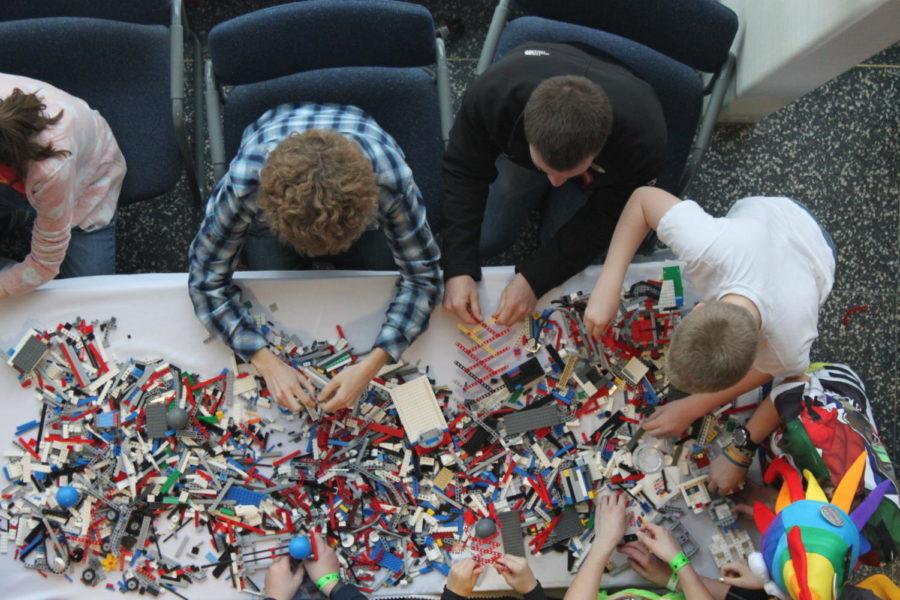Lego robots promote teamwork, ingenuity
January 20, 2015
Iowa middle school students put their skills to the test and turned Legos into working robots.
Students, science and Cy came together for the FIRST LEGO League competition hosted by Iowa State on Jan. 17 in Howe Hall.
A total of 72 teams of middle school students came from all over the state to challenge one another using robots they programmed and constructed using only Lego parts. About 3,000 people were estimated to be at the competition.
Eva Christner and Bryant Dutcher are sixth-grade students from Ogden Middle School, and they participated in this year’s FIRST LEGO League Competition as the Micro “Chips” with six other students. Under the direction of their coach Mona Satre, sixth-grade science teacher at Ogden Middle School, the Micro “Chips” competed in three matches with their robot, Señor Chips, against other teams in the competition.
FIRST LEGO League promotes science, technology and teamwork amongst students who are ages 9 to 14.
Each challenge has three parts: The robot game, the project and making sure students stick to the FIRST LEGO League core values, which include: working as a team, honor friendly competition and display professionalism.
Dutcher and Christner learned to work with their teammates while they worked to build relationships with experts in the field. Christner said each person on the team was given a partner to brainstorm ideas with to come up with the final idea for the robot that would compete.
“We had practice three times a week,” Dutcher said. “We went through a couple different models, so it took us maybe a month [to build the robot].”
Each group’s Lego robot is faced with a series of themed challenges. Each team’s robot is programmed to move and pick up different objects at the touch of a button.
“It’s not remote-controlled. This is all pre-programmed,” said Wesley Brueland, mentor to Satre’s students and senior in aerospace engineering. “When they’re out on the field, there’s no touching it or anything. They push the go button and it does what it’s supposed to and it comes back.”
Each task the robot is able to complete in the challenge gives the team a variety of points.
Satre has been coaching the LEGO League team for the last 10 years and said she enjoys working with sixth-grade students.
“[FLL] is excellent for the students. It gets them excited about science. It’s an addition to my classroom,” Satre said. “Sixth graders start out all wild and crazy and come together as a group that can do pretty neat things.”
Brueland helped Satre’s students while they prepared for the competition. He also participated in LEGO league when he was in sixth grade, and he wanted to give back to students and get them excited about engineering.
“Wesley comes in and they see him as someone that used to be them and now he’s being an engineer,” Satre said. “He exposes them to science outside of the classroom. Having a mentor like Wesley opens their eyes to college.”
Satre said she wants to show her students that science can be exciting.
“I want them to get excited about science, to see that it’s not nerdy. That it’s exciting,” Satre said. “It’s just like going to an athletic event and they can have just as much [fun] with science as anything else.”
Satre’s work of promoting science has given students such as Christner and Dutcher the opportunity to learn more about technology and engineering.
“We learn a lot about normal things we will do in life,” Christner said. “It’s a lot more than just building stuff. That’s the first thing that comes to mind, but it’s so much more.”







